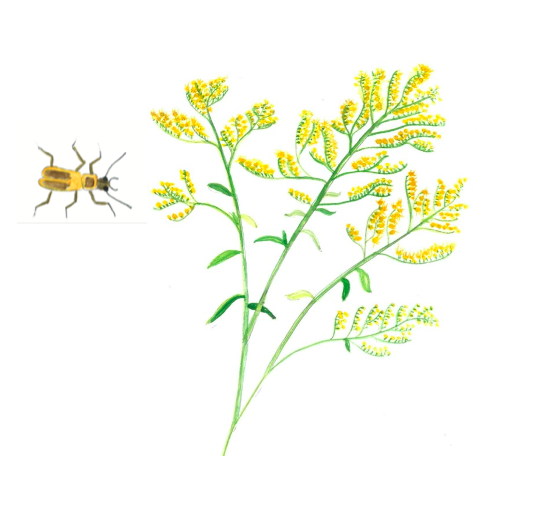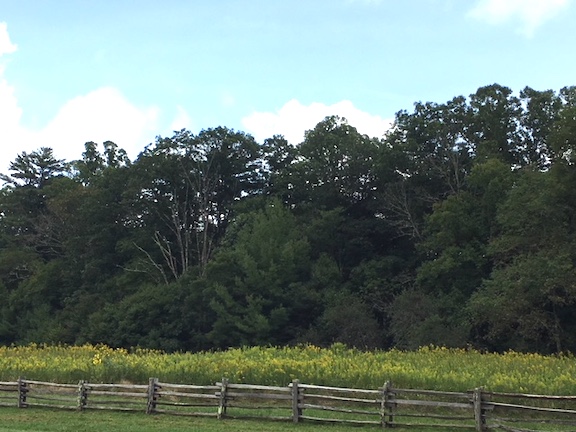If you ever watched a Bugs Bunny cartoon, you’ll probably remember Yosemite Sam yelling, “there’s gold in them thar hills!” although I never remember Sam actually finding gold.

Perhaps Yosemite Sam would have had more success had he been looking for Goldenrod rather than the hard to find but obsessively sought after precious metal. These days all our hillsides are beginning to turn gold with the blooms of this autumn native.
You can find goldenrods throughout North America. There are over 125 species native to the United Sates. These interbreed easily and it’s often difficult to determine exactly which species you’re looking at. But, it’s easy to tell when you’re looking at some kind of goldenrod. They have tiny, daisy like flowers clustered together on a long stalk and almost always, the flowers are a golden yellow color.

Goldenrods are short day bloomers, meaning no matter what the temperature, when the days begin to shorten, these are going to bloom.
These plants are essential to pollinators such as bees, flies, wasps, butterflies and beetles, especially the goldenrod soldier beetle. The leaves are used by many different butterfly species as larval food.

Western settlers made a tea from goldenrods and used it to treat kidney stones, toothaches and sore throats. Salves were made and used topically to treat sores and infections.
During the Revolutionary War, after colonists dumped imported tea into the Boston Harbor, many plants, particularly goldenrod were used to make a substitute tea called “liberty tea.” It was probably stronger on patriotism than it was on taste but it was a valiant act of liberty.
Contrary to commonly held beliefs, goldenrod does not cause hay fever. The culprit is ragweed, which blooms at the same time. Goldenrod makes a lovely cut flower and is a welcomed addition to any fall bouquet.
